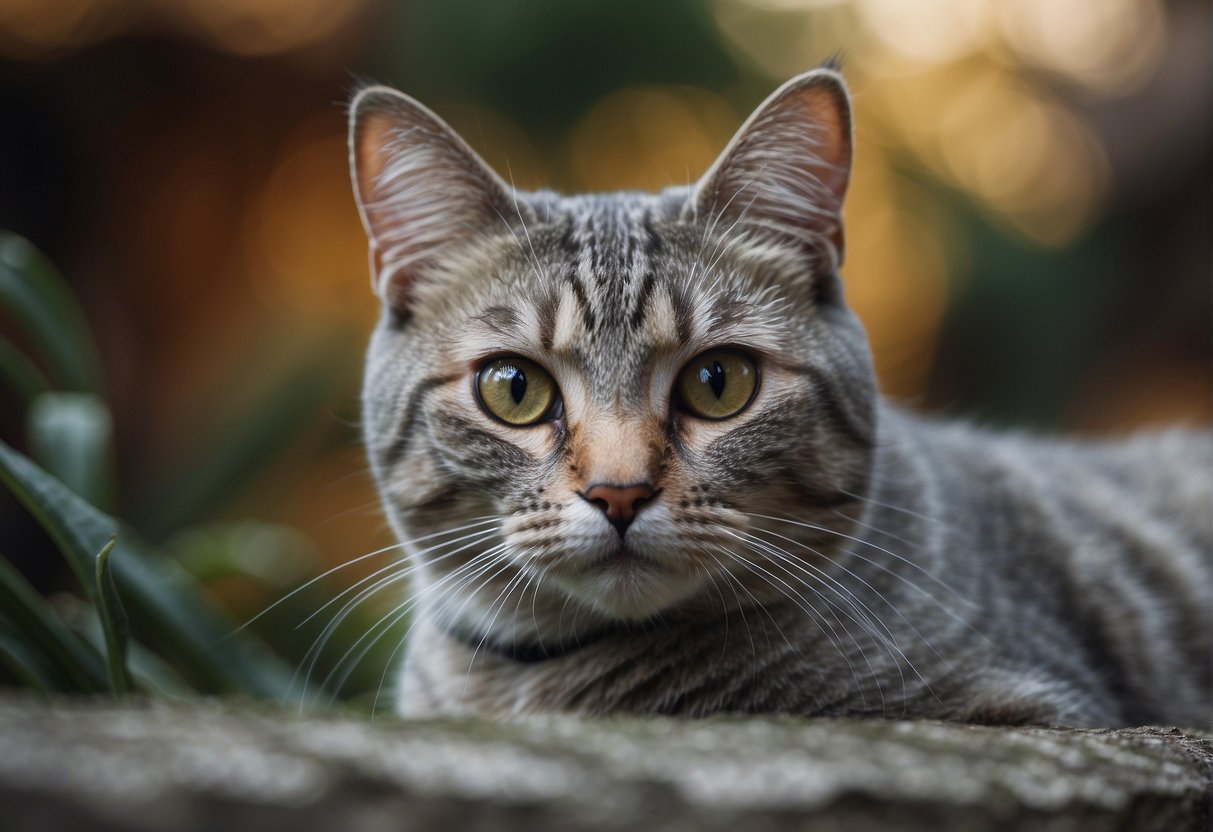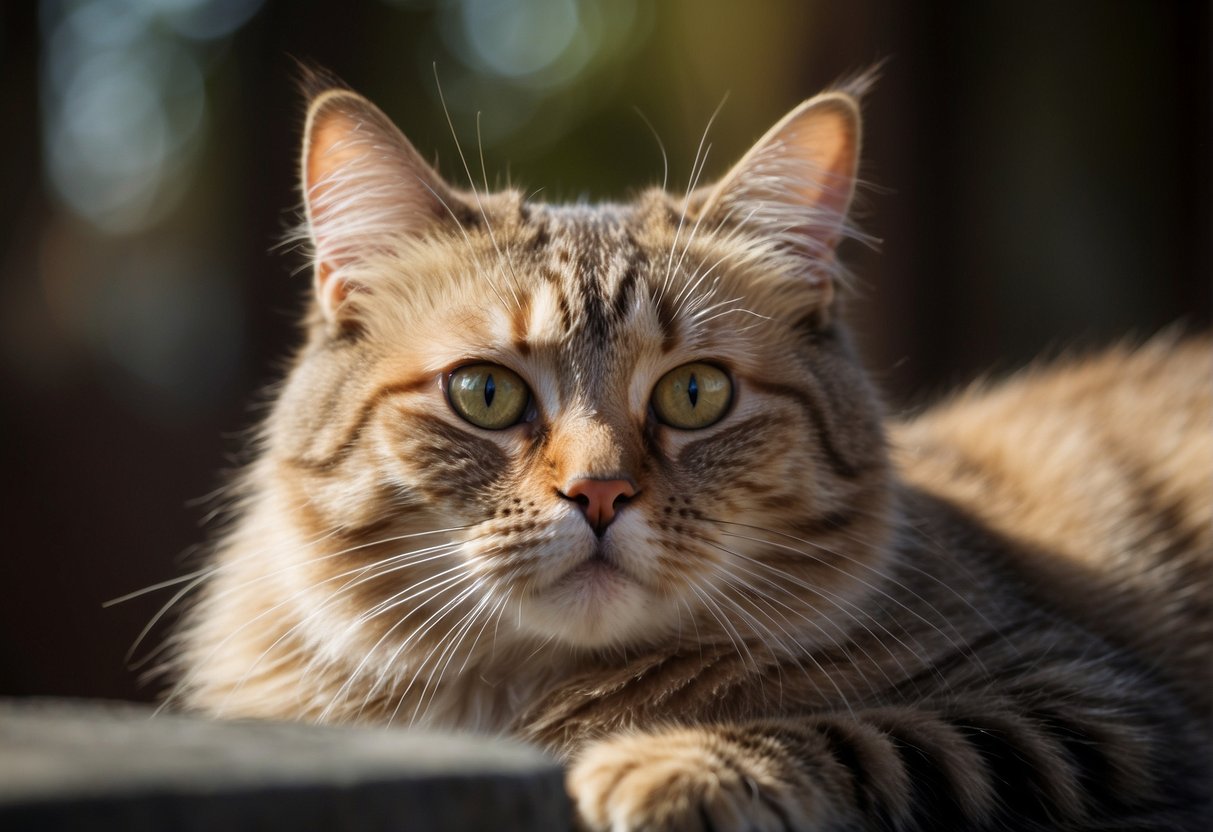Seeing your cat with crossed eyes can be initially surprising. Cats, particularly breeds like Siamese, Himalayan, Ragdoll, and Persian often have this trait from birth due to genetics. My own feline friends have displayed this quirk, adding to their charm and unique appearance.
Crossed eyes, or strabismus, happen when the muscles controlling eye movement are shorter on one side, causing the eyes to point towards the nose.

In some cases, cats develop this condition later in life. When that happens, it might be a sign of an underlying issue such as nerve damage, an injury, or an infection.
It’s similar to when one of my cats suddenly started squinting — a quick visit to the vet helped diagnose an eye infection, which after proper treatment, resolved without further complications.
For the most part, cats with congenital crossed eyes are unaffected by their condition and adapt very well, navigating their world without difficulty. The key is to observe your cat: if they’re healthy, active, and not showing signs of distress, their crossed eyes are likely just a part of their distinct personality.
Strabismus in Cats
Strabismus in cats, commonly known as crossed eyes, can be quite jarring as a cat owner. It’s important to understand the various facets that contribute to this condition.
Let’s explore what can cause your feline friend to have this distinctive appearance and how it relates specifically to their genetics and overall health.
Causes of Crossed Eyes
Strabismus in cats is often the result of muscles around the eyes being imbalanced. The condition means that the eyes don’t move in harmony, which leads to that cross-eyed look.
This can be due to an issue with the nerves controlling eye movement, or it could be related to the way the brain processes visual information. It’s important to consider that sudden changes in eye alignment might also be a symptom of an underlying health problem and should prompt a visit to the vet.
Genetics and Breed Predisposition
Some breeds, like the Siamese cats, are more prone to congenital strabismus, which is an inherited trait. Other breeds that often exhibit crossed eyes include Himalayan, Ragdoll, and Persian cats. These breeds have a genetic predisposition that affects the developmental aspect of the eye muscles, leading to strabismus from birth.

Recognizing Strabismus
You might notice your cat’s pupils pointing inward towards the nose, which is the hallmark of crossed eyes or strabismus. Cats with this condition may have trouble with depth perception or spatial calculations.
For example, a kitten clumsily pouncing over a toy rather than on it might be a sign. However, for many cats with congenital strabismus, they adapt quite well and live normal lives, with their unique look adding to their charm.
Diagnosis and Veterinary Care
When your cat starts showing signs of crossed eyes, it’s important to seek veterinary attention to determine the underlying cause.
Examination and Tests
Your vet will perform a thorough physical examination to assess your cat’s eyes and overall health. They’ll be looking for signs of trauma, evidence of underlying systemic issues, and symptoms that might indicate neurological conditions. Here’s a snapshot of what to expect:
- Complete Blood Panel: A series of blood tests to rule out systemic diseases or to detect conditions like cancer.
- X-rays: Imaging to look for any signs of trauma or tumors.
- CT/MRI Scans: Advanced imaging techniques used to detect brain and inner ear diseases that could be affecting eye position.
Treatments Available
Depending on the diagnosis, your vet will present a range of treatment options:
- Medications: If an infection is present, antibiotics may be prescribed. In cases of inflammation, anti-inflammatory drugs could be recommended.
- Surgery: In rare cases, surgery may be required to correct certain underlying issues.
- Physical Therapy: If your cat has experienced trauma, physical rehabilitation might be helpful.
- Cancer Treatment: If tumors are detected, a treatment plan including surgery, chemotherapy, or radiation may be suggested.
Managing Your Cat’s Condition
When a cat develops cross-eyed vision, or strabismus, it may impact their depth perception and ability to judge distances. However, many cats adapt well to this condition. It’s important to monitor their daily behavior and know when to seek veterinary assistance.
Daily Life and Adaptations
Your cat’s day-to-day life can be quite normal, even with crossed eyes. Cats with congenital strabismus—that is, those born with the condition—typically adjust without significant issues. They may have some challenges judging distances, but your feline friend has other senses to rely on.
Ensure your home is safe and cat-friendly. This can include:
- Stable climbing structures: Cat trees with broad, stable bases.
- Clear pathways: Keep floors clear to avoid trips and falls.
- Consistent layout: Try not to move furniture often, as cats memorize space layouts.
While a cat’s depth perception might be off, their keen sense of touch and excellent hearing help them navigate the world. Patience is key as they learn how to compensate for their unique view of the world.
When to Seek Further Help
Although many cats with strabismus lead a normal, healthy life, sudden changes in eye alignment can be concerning.
If your cat’s eyes have only recently crossed, it might indicate an underlying health issue.
Look out for signs like:
- Persistent cross-eyed appearance or nystagmus
- Changes in behavior or navigation skills
- Signs of illness, such as appetite loss or lethargy
These symptoms could suggest a need for a veterinary examination.
An expert can determine if the strabismus is benign or if there’s a more serious condition affecting your cat’s eyes or brain.

My name is James, and welcome to FAQCats!
Along with our team of cat owners, expert pet enthusiasts, and pet professionals, we aim to write engaging helpful, engaging content about cats. At FAQCats we strive to provide content that’s accurate and fun to read. Our team writes about everything related to cats; even the most complex of topics. Through extensive research and caring for our own fur-pals, we’re able to provide something cat owners worldwide will love. Have a look around, and leave us feedback anytime!

